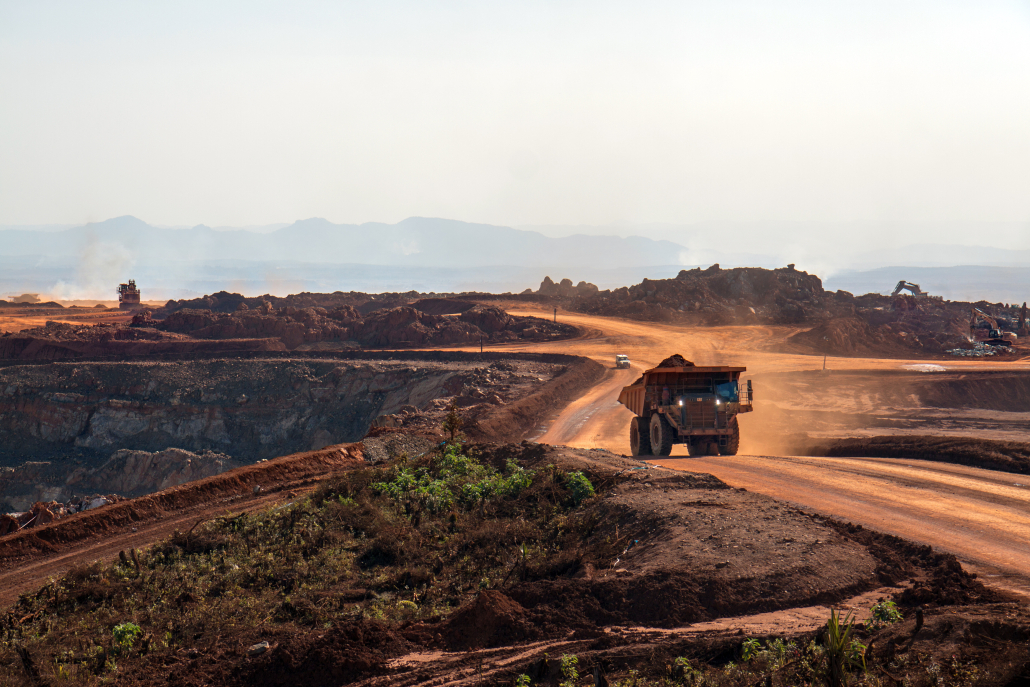Exploring Mining’s Future: The Evolution of Mining Tire
Mining has always been an important sector, acting as the foundation of economic development and resource exploitation. The success of mining operations heavily depends on various factors, one of which is often overlooked – mining tire. These enormous, rugged tires are critical to the smooth functioning of heavy machinery used in mining, construction, and other sectors. In this comprehensive article, we will dig into the world of mining tire, investigating their evolution, influence on efficiency, safety concerns, and future possibilities in the mining sector.
The Importance of Mining Tire
Mining tire are the mining industry’s invisible heroes. They are in charge of transporting huge goods, tolerating hard circumstances, and safeguarding the safety of on-site team members. Here are some key reasons why mining tires are indispensable:
Load-Bearing Capacity
Mining vehicles, such as haul trucks and loaders, are known for their enormous size and capacity. Therefore, these tires must bear the weight of hundreds of tons of ore, rock, or overburden while maintaining stability and durability.
Safety
In mining activities, safety is of the top priority. Actually, mining tire provide the necessary grip and stability to prevent accidents and ensure the well-being of operators.
Efficiency
Mining operations that are efficient require machinery that can run constantly without interruptions or delays. Mining tire are essential to minimizing downtime and improving productivity.

The Evolution of Tires in Mining
Mining tires have improved tremendously since their basic origins. Over time, changes in technology, materials, and design have impacted the mining tire industry. Let’s analyze the key moments in their development:
Bias Ply Tires
In the early days of mining, bias ply tires were everywhere. These tires included numerous layers of connected cloth belts, which offered acceptable load capacity but limited durability.
Radial Tires
The development of radial tires was an important advance in mining tire technology. They had steel belts that were parallel to the path taken by the tire, enhancing stability, load capacity, and heat resistance.
Large-Diameter Tires
The need for bigger, more durable tires increased along with the size of mining operations. In order to fulfill the needs of big haul trucks used in open-pit mining, manufacturers started making tires with a greater diameter.
Low-Pressure Tires
Low-pressure tires, frequently referred to as “super singles,” were created to reduce soil compaction and ground pressure in off-road conditions. These tires are very beneficial in environmentally sensitive locations.
Improved Tread Design
The evolution of tread designs contributed to better traction on a variety of surfaces. Self-cleaning treads keep waste at low levels, while fresh ideas increase tire performance in harsh circumstances.
Run-Flat Technology
Run-flat technology has changed mining tire safety. As a result, it allows tires to continue operating even after being damaged, lowering the risk of accidents and downtime.
The Impact on Efficiency
The basis for successful mining operations is efficiency. In the following ways, mining tire play an essential part in obtaining and sustaining high levels of efficiency:
Increased Payload Capacity
Advanced mining tires, particularly radial tires, have significantly increased payload capacity. This makes it possible for bigger loads to be provided in a single journey, reducing the number of trips necessary and increasing overall efficiency.
Reduced Downtime
Downtime in mining operations may be quite expensive. Mining tires can operate continuously by reducing unexpected maintenance and repairs with the help of durable, long-lasting tires.
Improved Fuel Efficiency
Low rolling resistance mining tire can result in significant fuel savings. The reduction of fuel use contributes to a more sustainable and ecologically friendly operation and lowers operational costs.
Enhanced Traction
Even in difficult terrains, modern mining tire tread patterns give exceptional traction. This allows machines to easily handle steep inclines, slippery slopes, and uneven ground, enhancing efficiency even more.
Longer Lifespan
Over time, mining tires have become more durable. Tires that last longer demand fewer replacements, which lowers expenses and increases the lifespan of mining equipment as a whole.
Sustainable Mining Tire
In an era of increasing environmental awareness, the mining industry’s primary concern is sustainability. Sustainable mining tires attempt to lower the industry’s environmental mark while also addressing the following issues:
Reduced Soil Compaction
Low-pressure tires, sometimes referred to as float tires, helps in reducing soil compaction, which is essential for maintaining the environment, particularly in environmentally sensitive locations.
Energy Efficiency
Mining tires with low rolling resistance help to make mining operations more environmentally friendly and sustainable by reducing greenhouse gas emissions in addition to improving fuel economy.
Tire Recycling
Historically, the disposal of worn-out mining tire has been an environmental concern. However, innovative recycling processes are emerging, allowing for the reuse of tire materials and the reduction of trash.
Sustainability Certifications
Some tire producers have begun to pursue sustainability certifications for their goods as a way to demonstrate their dedication to minimizing environmental effect.
The Future of Mining Tire
The future of mining tire is set to be much more fascinating. Here are some trends and technologies to keep an eye on:
Smart Tires
The incorporation of sensors and IoT technology into mining tire will enable for real-time monitoring of tire problems. As a result, it allows predictive maintenance and decreasing downtime.
Autonomous Vehicles
The growth of self-driving mining vehicles will involve specialty tires built to fulfill the particular requirements of self-driving gear.
Sustainable Materials
Recently, manufacturers are exploring sustainable resources for tire manufacture. For example, reclaimed rubber and bio-based compounds, in order to reduce the environmental effect of mining tires.
3D Printing
3D printing and other additive manufacturing processes may change tire manufacture. Thus, it allows customization and optimize tires to specific mining uses.
Improved Run-Flat Technology
Future advancements in run-flat technology will make mining tire even more durable, improving safety and minimizing downtime.
Energy Recovery
Innovative tire designs that collect energy from tire deformation during operation might contribute to enhanced energy efficiency in mining operations.

In conclusion, mining tires are the not visible heroes of the mining sector, assuring efficiency, safety, and sustainability. Because of technological and design advancements, these tires have evolved significantly over time. Mining tire innovation will be essential in defining the mining industry’s future as it develops and faces new challenges. Because of the tremendous progress of mining tires, the mining sector may grow while reducing its environmental impact by concentrating on efficiency, safety, and sustainability.


